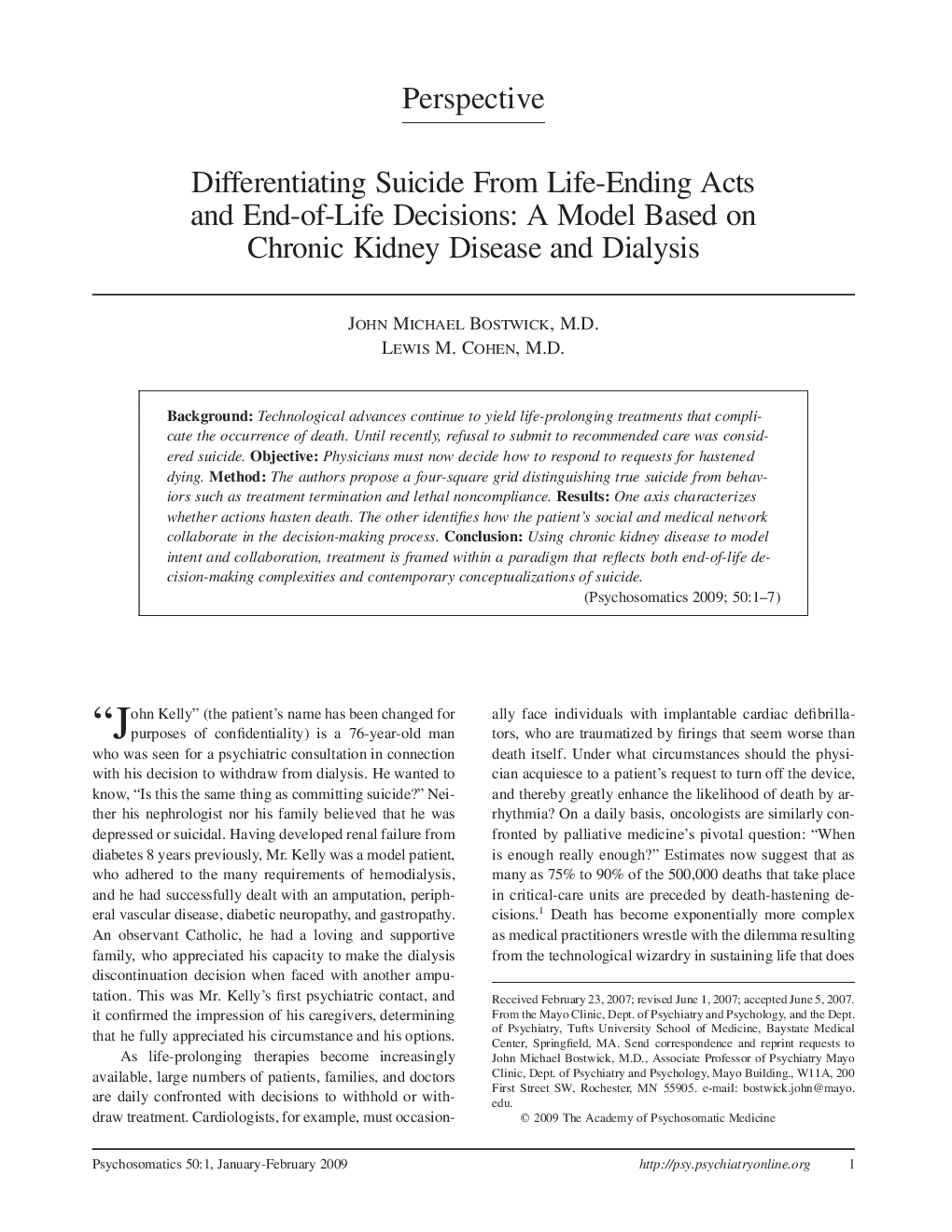| کد مقاله | کد نشریه | سال انتشار | مقاله انگلیسی | نسخه تمام متن |
|---|---|---|---|---|
| 338005 | 547656 | 2009 | 7 صفحه PDF | دانلود رایگان |

BackgroundTechnological advances continue to yield life-prolonging treatments that complicate the occurrence of death. Until recently, refusal to submit to recommended care was considered suicide.ObjectivePhysicians must now decide how to respond to requests for hastened dying.MethodThe authors propose a four-square grid distinguishing true suicide from behaviors such as treatment termination and lethal noncompliance.ResultsOne axis characterizes whether actions hasten death. The other identifies how the patient’s social and medical network collaborate in the decision-making process.ConclusionUsing chronic kidney disease to model intent and collaboration, treatment is framed within a paradigm that reflects both end-of-life decision-making complexities and contemporary conceptualizations of suicide.
Journal: Psychosomatics - Volume 50, Issue 1, January–February 2009, Pages 1–7